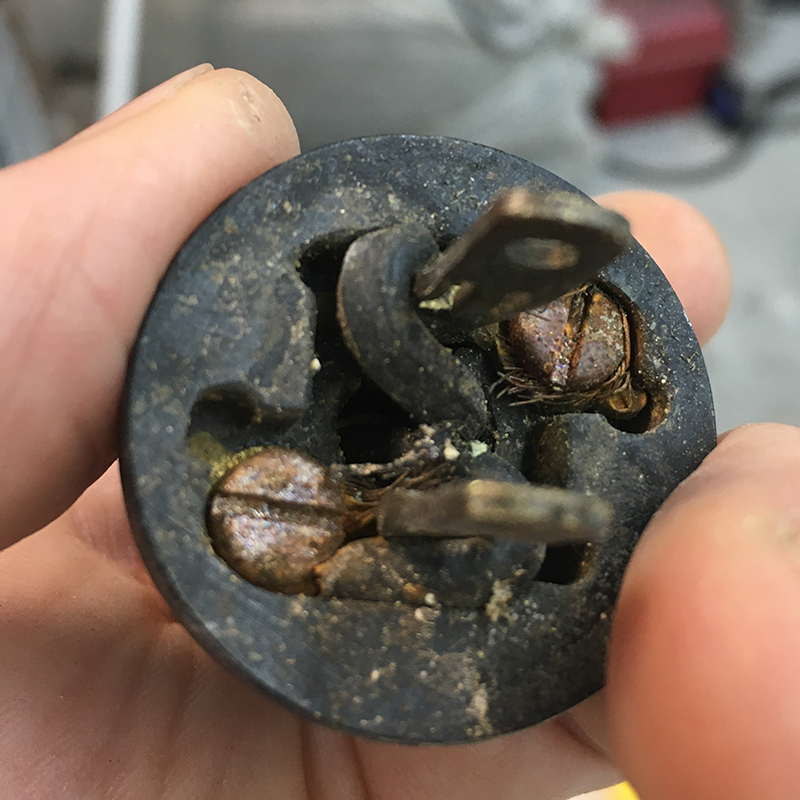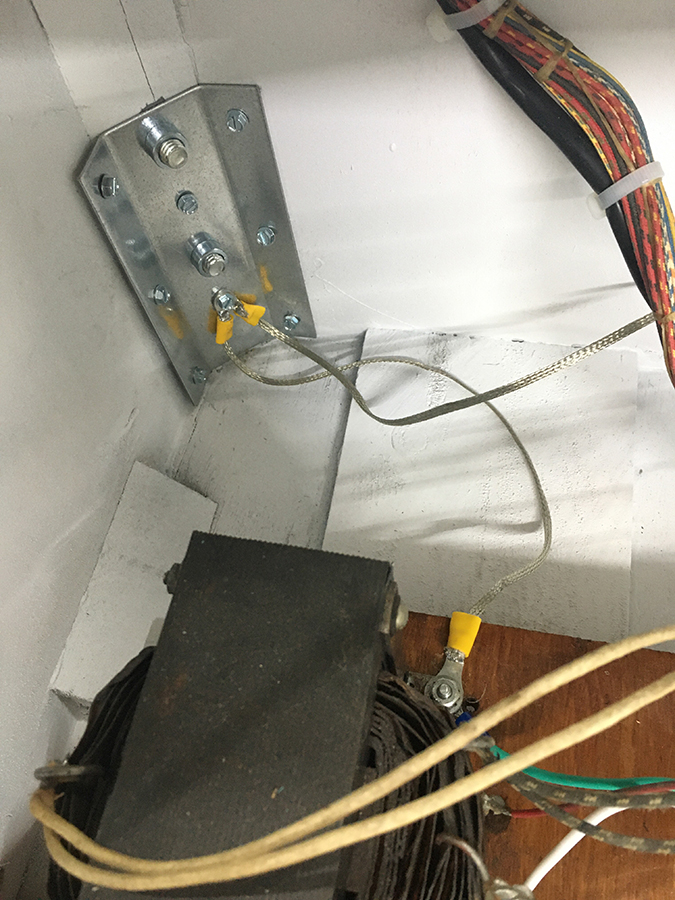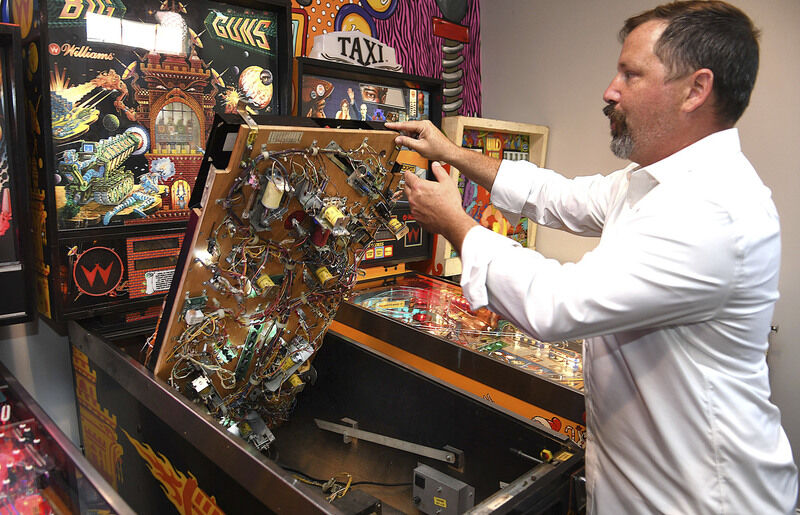DISCLAIMER: I am not an
electrician nor do I play one on TV.
Pinball can be a shocking experience and not in a good way! Underneath all of those flashing lights and flipping flippers are a maze of miles of wires, any one of which could short out and send some electricity your way.
Think about it. Your hands are resting on a metal lockdown bar, metal side rails or fiddling around underneath the playfield when you know you should have the power off.
Any wire could wiggle lose and come in contact with the metal framework of the pinball machine or your errant screw driver could contact live light socket.
So every machine in your collection should be properly grounded. This means having a three-prong plug with a ground plugged into a grounded outlet and every bit of metal connected to the ground using grounding wire.
The voltages in pinball machines can be lethal or give you a painful jolt so grounding is important. Most modern machines are properly grounded, vintage machines not so much.

What is grounding?
Electricity seeks the fastest most efficient way to the earth. The goal of grounding is to give electricity a better path to the earth than through your body.
Rather than coursing through your body down the floor via your tennis shoes, you want any potential errant electricity to follow a path to the grounded electrical cord and then outside through your electrical system.
/cdn.vox-cdn.com/uploads/chorus_asset/file/19585987/0604_wiring02_lg.jpg)
Grounding Your Pinball Machine
If your pinball machine is a solid-state machine with circuit boards, it is more likely to have a three-prong, grounded electric plug.
It’s not like the pinball companies really cared so much about safety, they were mostly interested in controlling electric noise that would affect the electronics. But that said, many early electronic pinball machines have been plagued by grounding issues that wreak havoc on the circuit boards.

So if your machine has a three-prong plug, it is most likely grounded although you should check to see if the metal parts of the cabinet are grounded.
More recent pinball machines, living in a modern society that likes to sue for little things like getting the shock of one’s life, you’ll find the machines have pasted inspection from watchdog groups like UL (UL LLC is a global safety certification company).
Electronic Mechanical Pinball Machines are not ground
Vintage pinball machines from the 70s and older are typically not grounded. It was just another world back then. Remember seeing those photos of death trap cribs or strollers in your scrapbook? Seat belts? Psssst. Safety glass. Psssst. The generation that fought in World War II had not need for nanny state safety.
Spill a beer while playing pinball and getting your shoes blown off? Well, that will teach you a lesson.
So most likely that forty or fifty-year-old pinball machine you pick up at a yard sale will not have a grounded plug or any regard for safety. Some of these machines have a metal start button that is protecting you from live electricity by a bit of “fish paper” between the metal leaf switch and the metal parts of the cabinet.
Fish paper is a durable, flexible, electrical insulator that’s made of vulcanized fiber and used with motor windings and for gasket insulation. A lightweight dielectric paper.
Does it mean you’ll get a shock from it? Maybe not today, maybe not tomorrow but perhaps one day when a kid walks up to a machine. Better not to take any chances.
Most likely the old bake light electric plug and cord is on its last legs. The first thing you want to do is buy a new heavy duty appliance cord. Remove the old cord and solder in the new three-prong grounded cord to the transformer.
Next you’ll want to buy a spool of 1/4 inch wide braided grounding cord and connect every bit of metal to the ground.
- Legs
- Side rails
- Coin door
- Start button
- Plunger
Basically anything metal that someone might touch on the outside of the machine should be connected to ground.

I like to purchase connectors, solder them to the braided grounding cord, and then connect them to the various metal parts. You can also screw right through the braided wire if need be.
The side rails can be tricky. If you have the lockdown bar grounded there may be some connection from the lockdown bar to the side rails but it’s not always the case. Better to be sure and do what they do on modern machines, use a bold through the side rails and then connect the grounding wire to the bolt.
Shopping list for this project
15 Foot Appliance Cord (cut off one end)

1/4 inch braided grounding wire spool



Good quality soldering station

